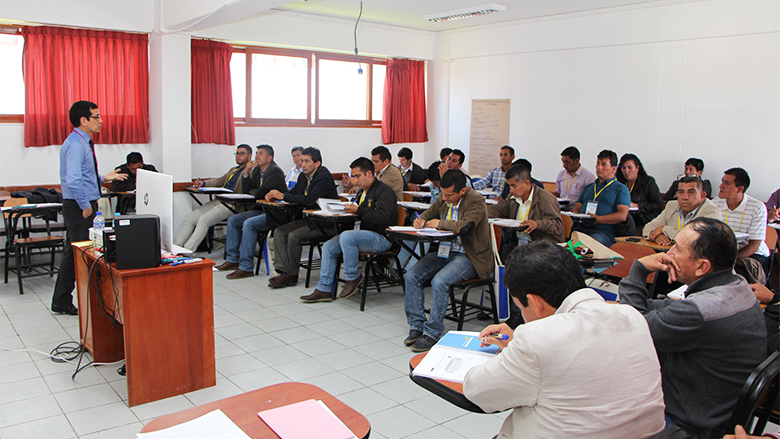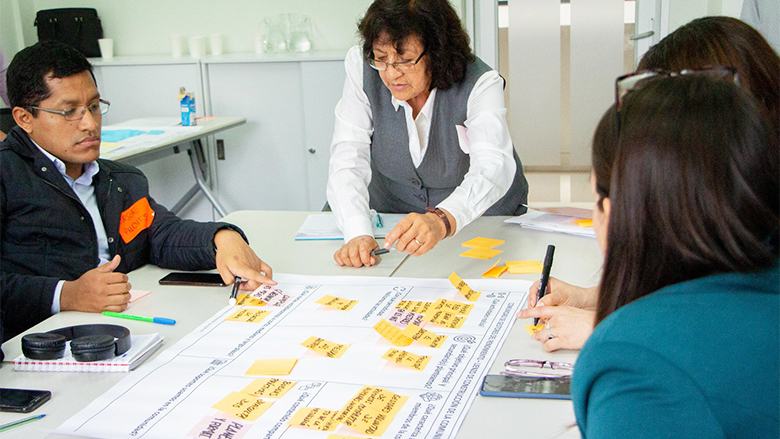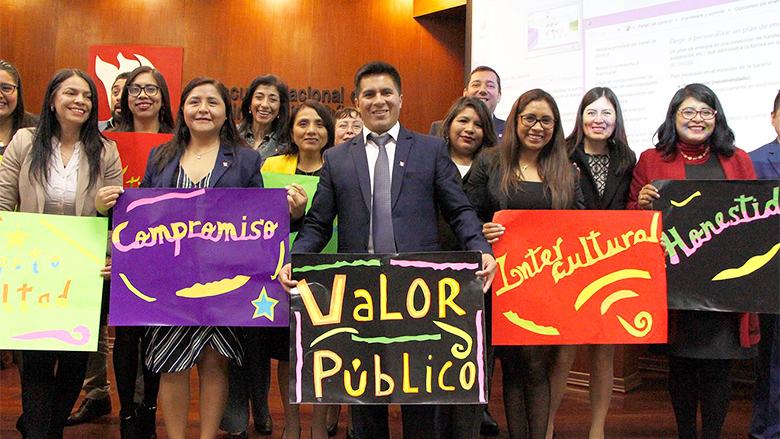Challenge
The rapid decentralization process and expansion of public-private partnership (PPP) programs in Peru between 2005 and 2015 highlighted the need to improve these programs’ reporting and management frameworks to manage potential risks. Over this period, nearly all sectoral functions and associated financial resources were transferred to 26 regional governments (RGs) and to more than 1,800 local governments (LGs), regardless of their readiness and capacity. In 2014–15, subnational governments accounted for about 38 % of total nonfinancial public sector spending and 60 % of total public investment spending. Many subnational governments (SNGs) increased staff numbers to help build capacity, but most hiring was conducted in an uncompetitive manner. The rapidly expanded PPP program lacked a strong quality control process, with many projects hastily prepared and often supply driven in response to unsolicited proposals submitted by private sector entities seeking public contracts.
Approach
The SNGs’ weaknesses in public investment and budget management highlighted the importance of maintaining prudent fiscal management and of strengthening management capacity to implement public investment programs and PPPs at all levels to contain fiscal risks and accelerate project implementation. The government recognized the need to provide SNGs with fiscal rules and a strict reporting framework. While the overall PPP framework was strong, an additional step was needed to fully integrate SNGs into the public investment system and to deploy structured decision-making processes for the fiscal risks associated with PPP contracts.
The Peru Public Expenditure and Fiscal Risk Management Development Policy Finance–Disaster Drawdown Option (DPF-DDO) project supported key policy reforms through eight prior actions focused on (i) implementing the legal framework for SNG reporting; (ii) clarifying the institutional responsibilities for SNG monitoring; (iii) issuing regulations to clarify roles in implementing the new fiscal responsibility law; (iv) establishing a new human resource management (HRM) regime with a category of professional and competitively recruited public managers; (v) enacting a new PPP framework that integrated PPP projects into the budget process with selection criteria based on technical assessments and with a requirement for a favorable binding opinion from the Ministry of Economy and Finance (MEF) for new projects prior to contract signature; (vi) appointing MEF as the guiding entity for the review and approval of PPPs under the national public investment process; (vii) revising the procedures for receiving and processing unsolicited PPP proposals and putting a dispute resolution mechanism in place for PPP contracts; and (viii) designing a national private investment promotion system to guide PPPs through a clearer process with technical criteria and institutional roles.
Results
The framework for subnational fiscal rules and transparency was established as early as 2000 through the Fiscal Responsibility and Transparency Law (Law 27245). Most SNGs experienced difficulties complying due to the complexity of the fiscal responsibility framework and the extensive number of fiscal rules. In 2009, partly in response to the impact of the global financial crisis, efforts were renewed to ensure compliance by simplifying and improving coherence between fiscal rules on spending and debt limits.
Between 2009 and 2015, the Peruvian government issued regulations to strengthen the management and reporting framework for fiscal responsibility in SNGs, including the procedures for determining the fiscal targets and laying out the methodology, reporting, and disclosure requirements and sanctions for noncompliance with the fiscal rules. The following are key reforms and policies that resulted from the project:
- The national government granted authority to the General Directorate of Macroeconomic Policy and Fiscal Decentralization within MEF to monitor the SNGs’ fiscal and financial management performance.
- Regulations were prepared to implement the new Strengthening Fiscal Responsibility and Transparency Law. These created an independent Fiscal Council to evaluate (i) ex-post compliance and changes of fiscal rules; (ii) macro-fiscal forecasts considered under the Multiyear Macroeconomic Framework; and (iii) short- and medium-term fiscal policy in terms of stance and sustainability.
- All regional governments and 94 % of local governments complied with fiscal rules for SNGs as of mid-2021, up from a baseline of just 50 % at the end of 2014.
- Government-issued regulations to implement the professionalization of managers in the civil service created a new category of public managers for both national and SNG functions, subject to merit-based recruitment and regular performance evaluations.
- The new HRM regime, aimed at increasing competitive hiring of public sector managers from 30 % to 80 % of positions, had been implemented in 50 % of selected entities as of early 2021.
- A new PPP framework was put in place with clearer roles and responsibilities and technical criteria for preparing, evaluating, and awarding contracts.
- Since late 2017, all PPP promoters (spending units) at all levels of government have issued their Multiannual Report on PPP Investment on a yearly basis.
- The number of unsolicited PPP proposals presented for evaluation by the authorities, targeted at 88, declined from 147 in 2015 to only 32 at the end of 2017.
- By the end of 2017, no PPP contracts at any level of government could proceed to tender without a favorable opinion from the Ministry of Economy and Finance.


